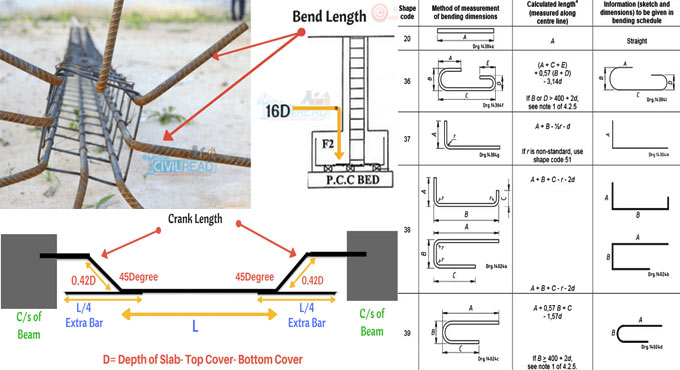While fabricating reinforcing bars with bends, the straight bar is primarily cut to a length that is under the sum of the specified dimensions of the bent bar.
The variation among the detailed length and the cut length belongs to the “bend curvature deduction” and called as various names like gain, creep, and gyp. Usually, the fabricators and programmers get the bend curvature deduction from a bend deduction table.
In the following table 1, the deductions for 45- and 90-degree bends of common bar sizes are provided.
Figure 1 illustrates a No. 8 (No. 25) bar with a standard hook and sides estimating 1 ft 4 in. and 4 ft (400 and 1220 mm). The detailed length of this bar is obtained by summing up the two sides, or 5 ft 4 in. (1620 mm). From Table 1, the deduction for a 90-degree bend on a No. 8 (No. 25) bar is 2-1/2 in. (65 mm). So, in such a case, the cut length of the bar should be 5 ft 1-1/2 in. (1555 mm).
The usual standard for working out the cut length of a bar is along the actual centerline of the bar, that is equivalent to the neutral axis of the bar cross section before bending. The cut length of a bent bar is less than the sum of the finished dimensions due to the following reasons :-
with a easy-to-follow mathematical calculation.
If the exterior fibers of the bar are elongated easily, the inner fibers of the bar are constrained by friction against the bending mandrel, so, the neutral axis shifts inward approaching the mandrel. It is critical to measure this component. The inconsistency arises from computing the lengths on the basis of the actual centerline is not very important.

No comments:
Post a Comment